Muhammad Shehab
Terahertz Multiple Access: A Deep Reinforcement Learning Controlled Multihop IRS Topology
Mar 16, 2023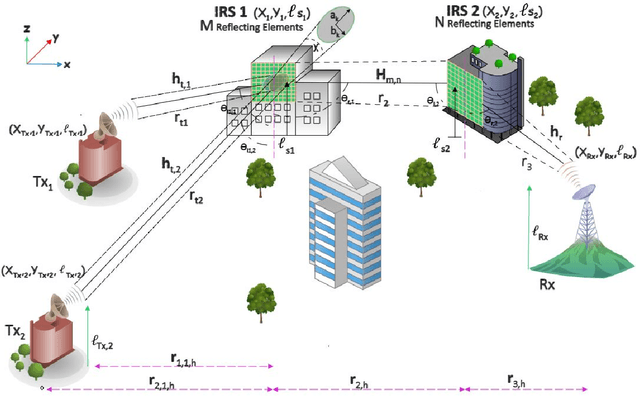
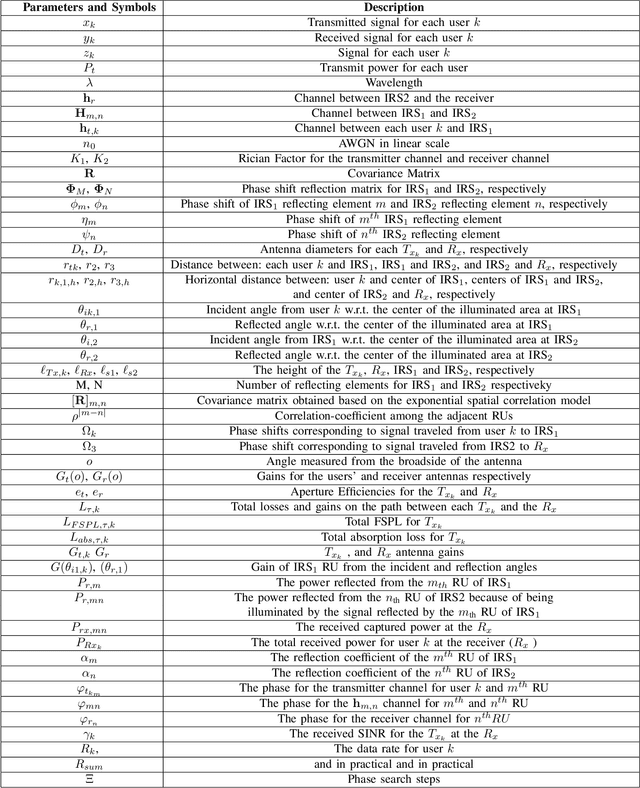
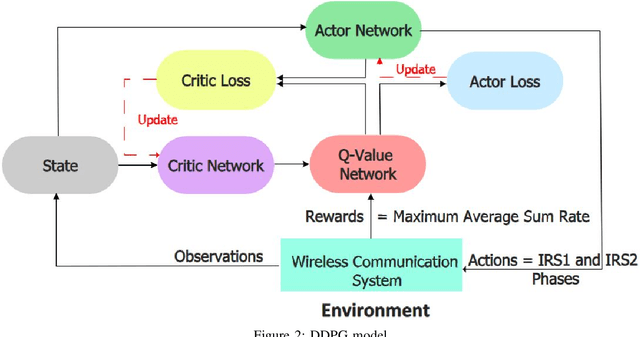
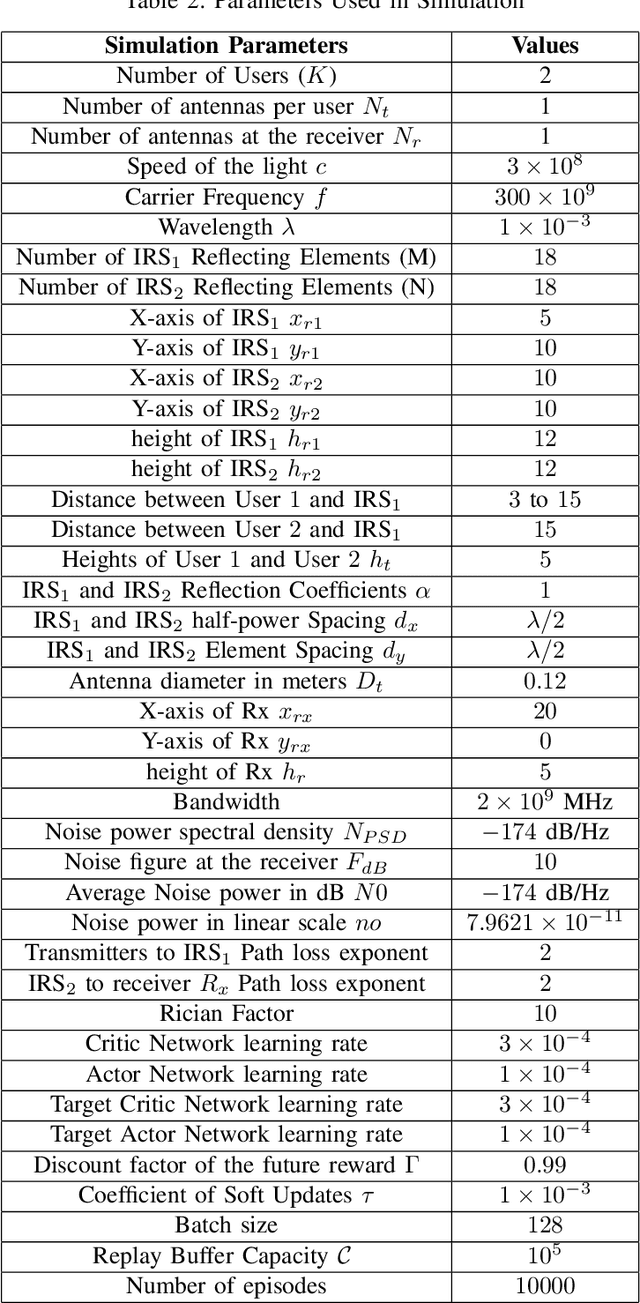
Abstract:We investigate THz communication uplink multiple access using cascaded intelligent reflecting surfaces (IRSs) assuming correlated channels. Two independent objectives to be achieved via adjusting the phases of the cascaded IRSs: 1) maximizing the received rate of a desired user under interference from the second user and 2) maximizing the sum rate of both users. The resulting optimization problems are non-convex. For the first objective, we devise a sub-optimal analytical solution by maximizing the received power of the desired user, however, this results in an over determined system. Approximate solutions using pseudo-inverse and block-based approaches are attempted. For the second objective, a loose upperbound is derived and an exhaustive search solution is utilized. We then use deep reinforcement learning (DRL) to solve both objectives. Results reveal the suitability of DRL for such complex configurations. For the first objective, the DRL-based solution is superior to the sub-optimal mathematical methods, while for the second objective, it produces sum rates almost close to the exhaustive search. Further, the results reveal that as the correlation-coefficient increases, the sum rate of DRL increases, since it benefits from the presence of correlation in the channel to improve statistical learning.
Deep Reinforcement Learning Powered IRS-Assisted Downlink NOMA
Apr 03, 2021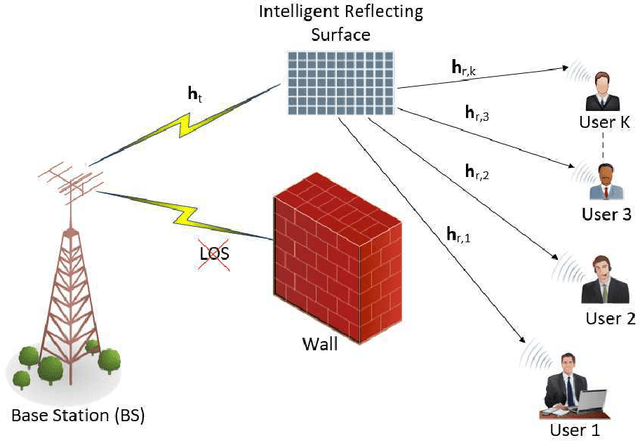
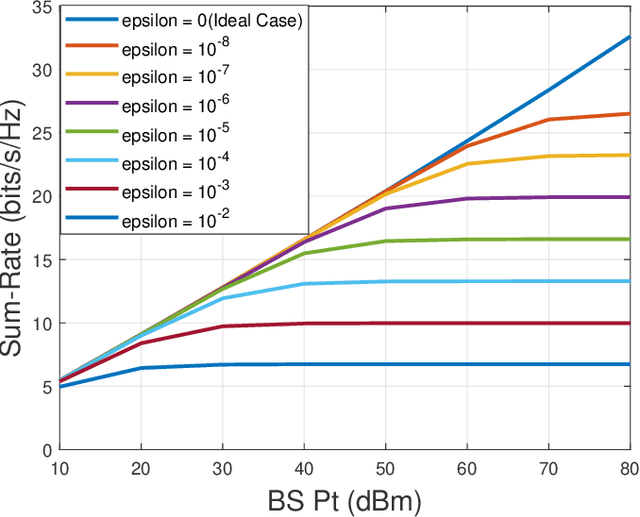
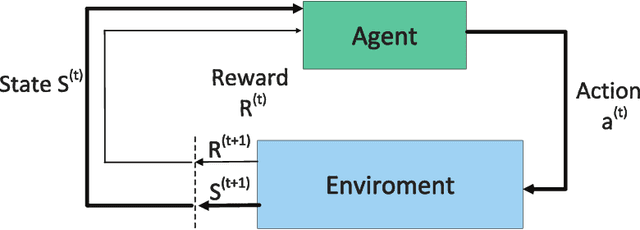
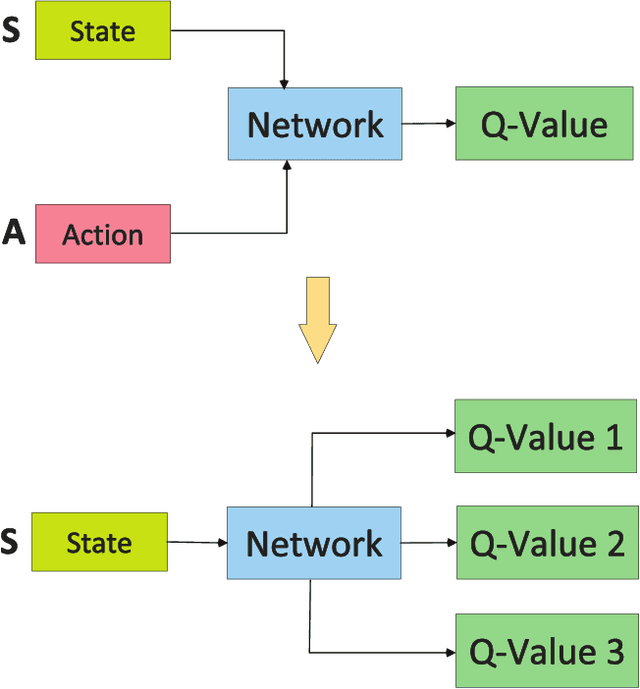
Abstract:In this work, we examine an intelligent reflecting surface (IRS) assisted downlink non-orthogonal multiple access (NOMA) scenario with the aim of maximizing the sum rate of users. The optimization problem at the IRS is quite complicated, and non-convex, since it requires the tuning of the phase shift reflection matrix. Driven by the rising deployment of deep reinforcement learning (DRL) techniques that are capable of coping with solving non-convex optimization problems, we employ DRL to predict and optimally tune the IRS phase shift matrices. Simulation results reveal that IRS assisted NOMA based on our utilized DRL scheme achieves high sum rate compared to OMA based one, and as the transmit power increases, the capability of serving more users increases. Furthermore, results show that imperfect successive interference cancellation (SIC) has a deleterious impact on the data rate of users performing SIC. As the imperfection increases by ten times, the rate decreases by more than 10%.
 Add to Chrome
Add to Chrome Add to Firefox
Add to Firefox Add to Edge
Add to Edge